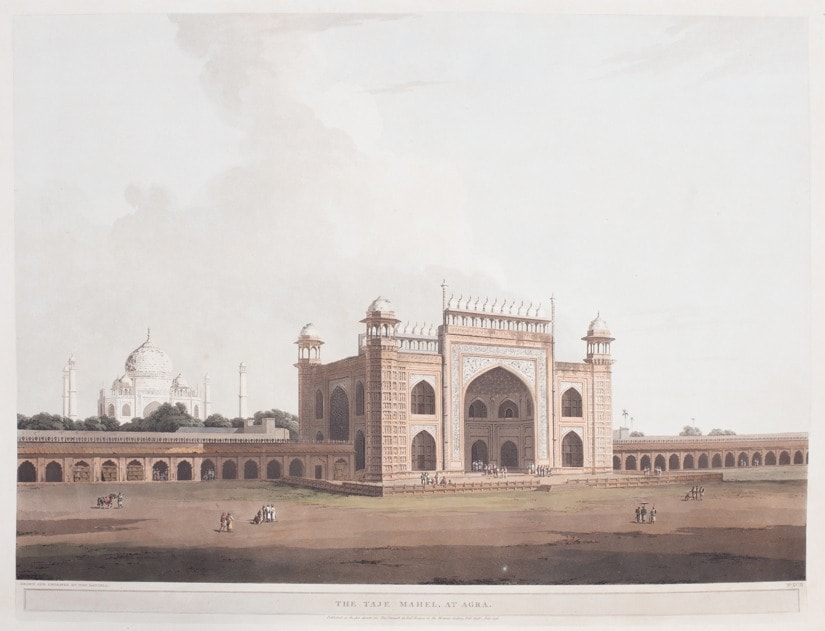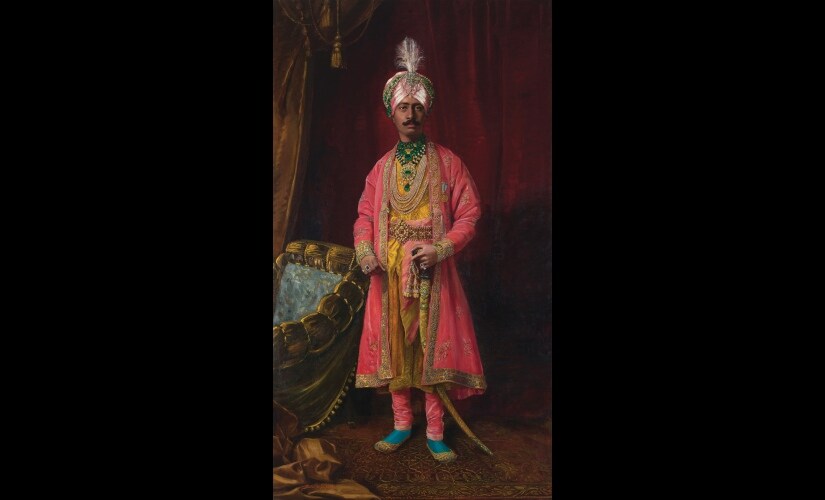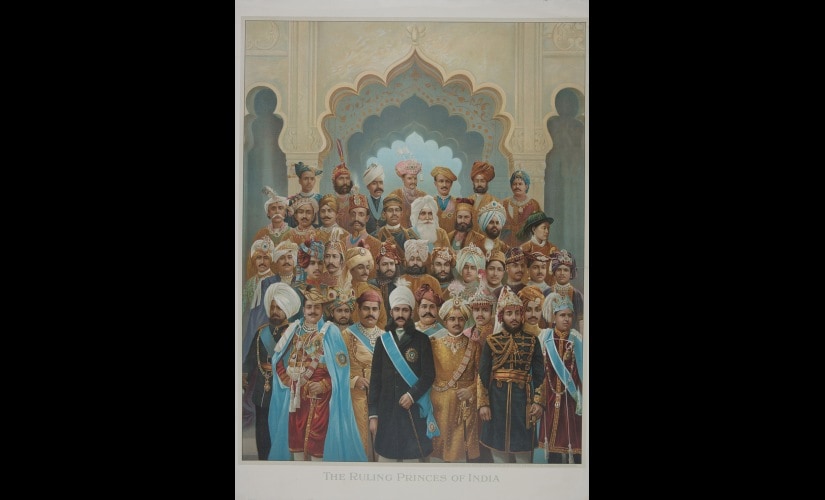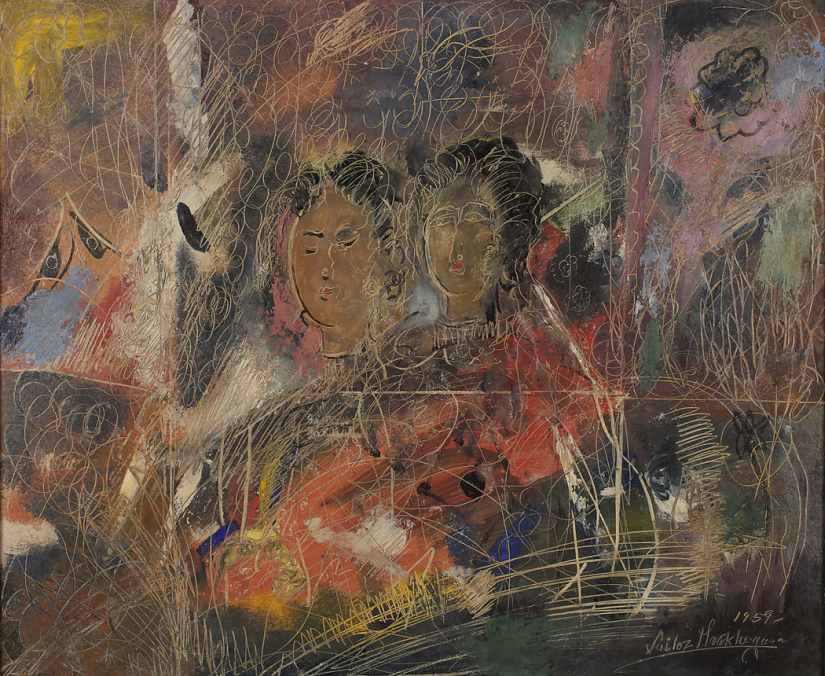The symbolic Red Fort of Delhi, despite its iconic status, has had a bit of an up and down journey. Ever since the Army moved out of the fort in 2003, attempts to renovate and preserve this historic site have been discussed, criticised and even taken to court. Understandably, historians and art critics alike have always seen the Fort as something beyond its yearly appearance on the television screen. An antiquity that more than anything else should be restored to the public, so it can say much more than is already assumed about the structure built during Shah Jahan’s reign. Therefore, after spending years restoring several barracks within the fort, The Archaeological Survey of India (ASI) has opened the multistorey barracks to the public. Of these, barrack no. 4, in collaboration with DAG, will offer a unique visual history of India through its art titled Drishyakala. [caption id=“attachment_6140391” align=“alignnone” width=“825”]  Drishyakala by DAG at Barrack No. 4, Red Fort. All images courtesy of DAG[/caption] Inside the barrack, some 450 pieces of art, through four different curations, intend to each tell a story. Oriental Scenery: Aquatints of India, has been curated by historian Giles Tillotson. It showcases works by the British artists Thomas and William Daniell. “One could call it an Orientalist view in so far as it represents Indian architecture and landscape through an English aesthetic paradigm, the Picturesque. Actually, it seems to me to pull in opposing directions. Some of the images depict India as a place of ruin, with ancient, de-functionalised buildings. Others capture and celebrate the glory of the Mughal empire (which actually was in decline by that time). It is interesting, though, that their work appeals as much to Indian as to English taste,” Tillotson says about the Daniells’ work. [caption id="" align=“alignnone” width=“825”]  The Taje Mahal, at Agra. Drawn and engraved by Thomas Daniell, July 1796. From Oriental Scenery - Aquatints of India by Thomas and William Daniell[/caption] The uncle-nephew pairing of the Daniells is crucial to understanding the image of India that was transported across seas. “The Daniells gave British audience their first real visual impression of Indian scenery. Up until then, Britons at home in Britain could read a lot about events in India but had no notion of what the place looked like. So they had a big impact on the British public. Later artists of Indian scenery (like Simpson and Lear) studied their work before going to India to find out what there was to see,” Tillotson says. While Tillotson’s curation offers a chance to understand Britain’s first encounters with India – the visual takeaway, if you like – historian Pramod Kumar’s curation A Portrait of our People turns the lens inward. “Portraits were a huge part of early Indian art. Even though most people see the modern Indian aesthetic being born only later, our portraits from the 18th century are proof that the seeds had been sowed with the Industrial revolution itself,” Kumar says. [caption id=”" align=“alignnone” width=“825”]  Anonymous. Nawab Mohammad Ali Khan Bahadur (1881-1947) of Malerkotla, Punjab c 1930s. From A Portrait of Our People[/caption] Unlike today, portraits of the 18th and 19th century correspond to a different motive. “People wanted to leave a part of themselves behind. Also, they wanted to be seen and remembered a certain way. These portraits were not just a tool these people used for documentation but at times even performance. Jahangir had portraits made, of him slaying Malik Ambar, a leader he never even met. So there is a bit of performance and theatre to it as well,” Kumar says. The rise and expansion of Indian art, as Kumar explains, could not have been possible without patronage. Naturally, it was Indian royalty that commissioned most artists, and are thereby ever present in the study of both art and history. In a way, Kumar says, it is an ideal example of the way art and history interlinked. A third exhibition in the barrack corresponds to a later period when small Indian presses had begun to come up. [caption id="" align=“alignnone” width=“825”]  The Ruling Princes of India c 1930s. From Popular Prints and the Freedom Struggle[/caption] Titled Popular Prints and the Freedom Struggle and curated by Paula Sengupta, this section throws light over the convergence of the freedom struggle and the printmaking techniques that helped distribute its core message. “As the Swadeshi movement gained ground, literature that furthered the nationalist cause also increasingly came to be printed in [the newly set-up] indigenous presses. Nationalist writers, poets, playwrights, scholars and intellectuals contributed to these publications. Alongside them, artists also joined the fray. As picture production outfits mushroomed in the bazaars, artists not only produced illustrations to supplement patriotic writing, but also produced broadsheets or independent display prints. These included portraits of nationalist leaders and depictions of significant developments in India’s march to freedom,” Sengupta says. The printed picture, Sengupta explains, was a crucial ingredient of the freedom movement. “As printed pictures, these had a wide reach, finding their way into people’s homes, offices, shops, etc, thus firing the imagination and arousing patriotic fervor amongst the larger populace,” she adds. [caption id="" align=“alignnone” width=“825”]  Sailoz Mookherjea (1906-60) Untitled (Two Sisters). From Navratna - India’s National Treasure Artists[/caption] A fourth exhibition in the barrack extends to art practice beyond independence with doyens like Nandalal Bose and others from the Santiniketan school. Cumulatively, the four exhibitions are a ride through history, with changing aesthetic, politics and culture as the landscape on the sides.“Usually, an exhibition like this inside a gallery intrigues the same lot of audience that visits art galleries regularly. It is a very small number. At the Red Fort, we are looking, perhaps, at a completely different type of audience that may or may not know this inextricably linked journey art and history. Through this exhibition we hope to make that relationship clearer, more accessible to a lot more than is usually thought possible,” Kumar says. Drishyakala is on display at the Red Fort, New Delhi
After spending years restoring several barracks within the Red Fort, The Archaeological Survey of India (ASI) has opened the multistorey barracks to the public.
Advertisement
End of Article


)
)
)
)
)
)
)
)
)



